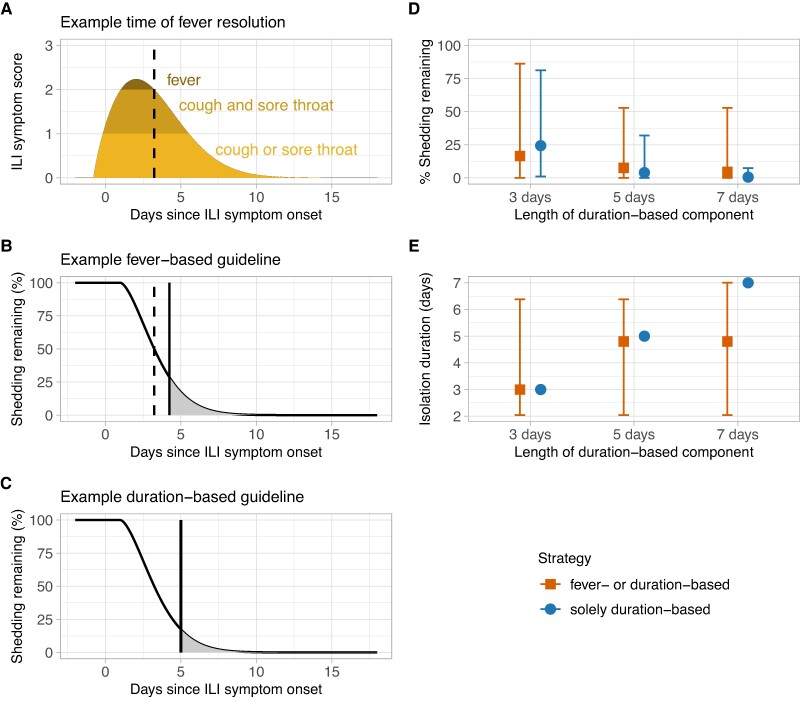Fig. 5.
Duration-based isolation strategies are effective in reducing shedding remaining after isolation from symptomatic individuals but may require individuals to isolate for longer. A, B) Example ILI symptom (A) and shedding remaining (B) trajectories from a child aged 5–17 years following a fever-based isolation strategy. The dashed vertical line represents the time of fever resolution, and the solid vertical line represents the end of recommended isolation. C) Corresponding shedding remaining trajectory for the same child following a duration-based isolation strategy that ends 5 days after ILI symptom onset. D, E) Estimates of shedding remaining (D) and duration of isolation in days (E) for different possible isolation strategies. A combined fever- or duration-based strategy indicates that individuals with fever isolate until 24 h after fever resolution and individuals without fever isolate for 3, 5, or 7 days after ILI symptom onset. A solely duration-based strategy indicates that all individuals isolate for 3, 5, or 7 days after ILI symptom onset, regardless of whether they experience fever or not. Points represent the median and error bars are the 90th percentiles.

